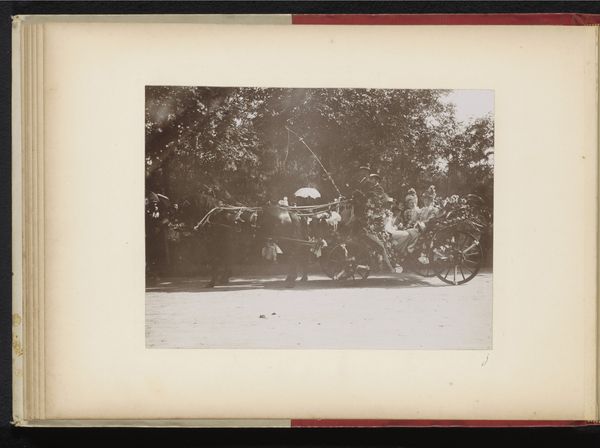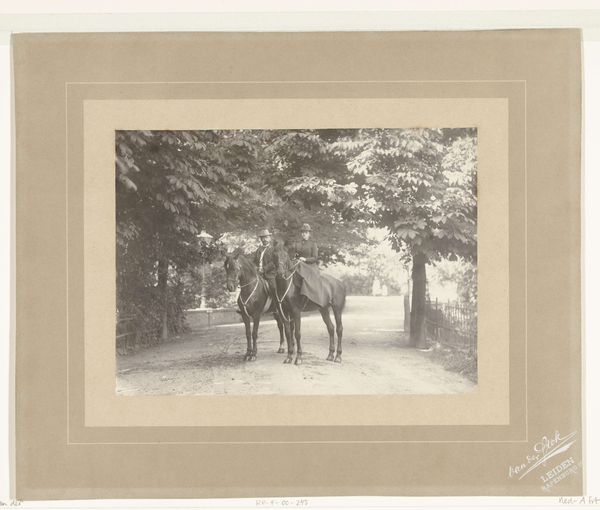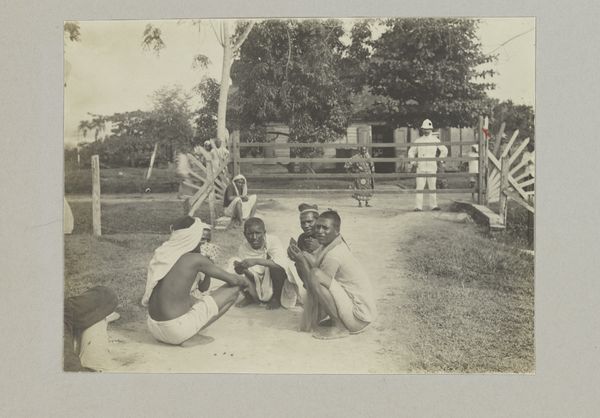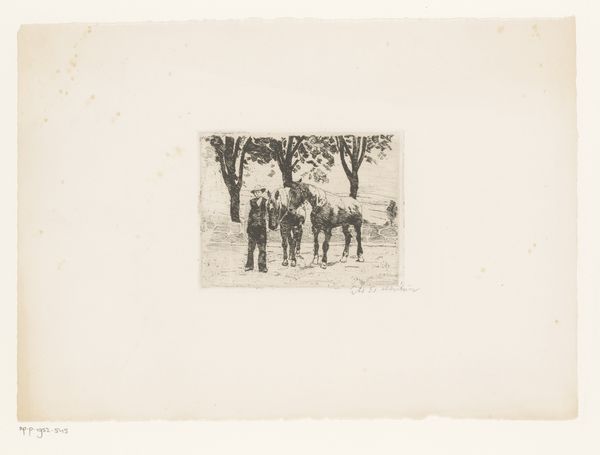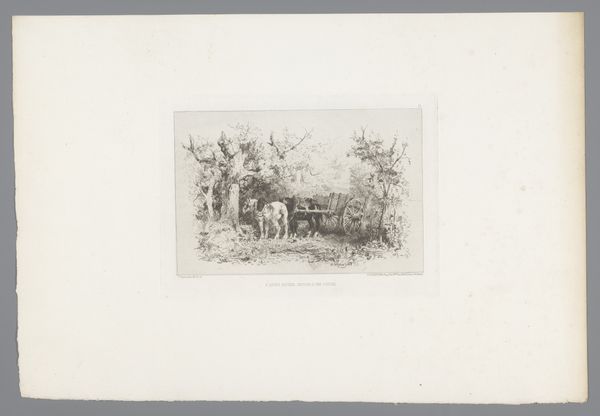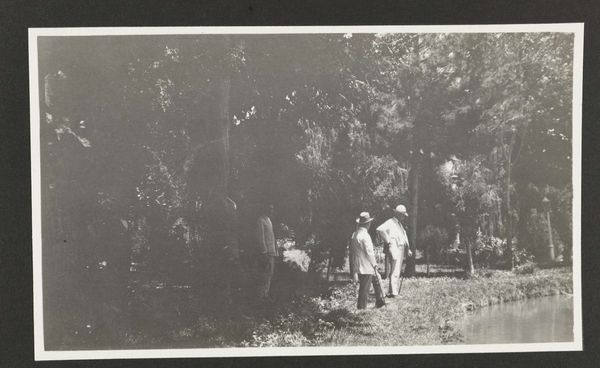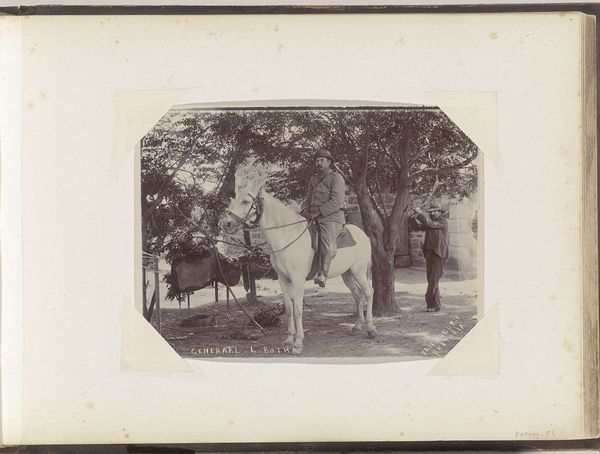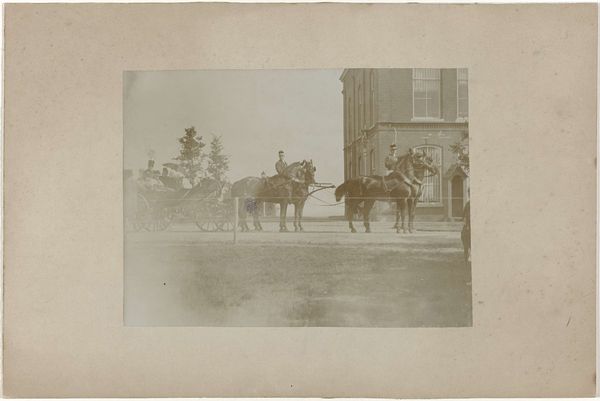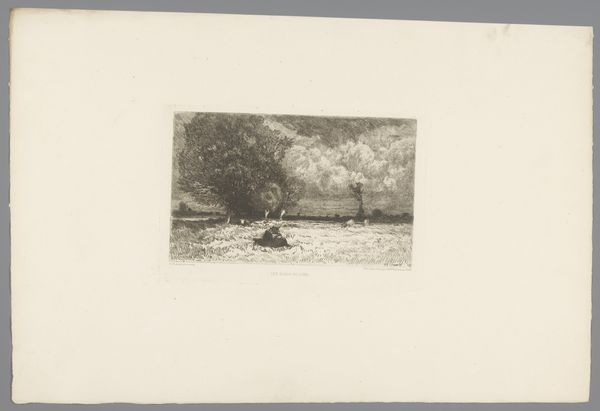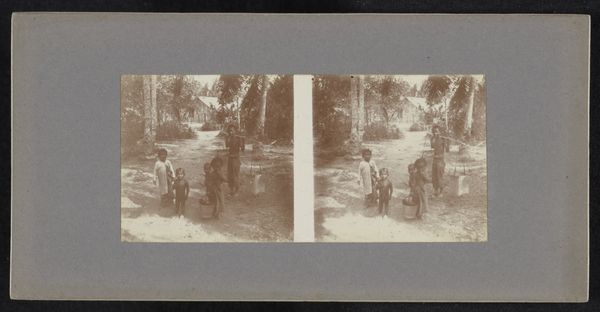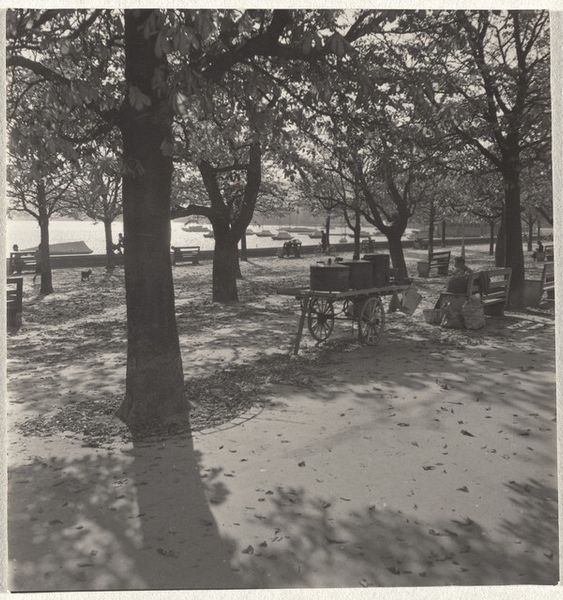
print, photography, gelatin-silver-print
#
print photography
# print
#
landscape
#
street-photography
#
photography
#
gelatin-silver-print
#
realism
Dimensions: image: 5.8 x 5.6 cm (2 5/16 x 2 3/16 in.) sheet: 6.5 x 9.3 cm (2 9/16 x 3 11/16 in.)
Copyright: National Gallery of Art: CC0 1.0
Curator: What strikes me immediately about this image is its quiet solemnity; the stark contrast creates a scene heavy with a particular, almost palpable, stillness. Editor: And the photograph you’re referencing is "Park--Landscape" by Robert Frank, a gelatin-silver print he created sometime between 1941 and 1945. The interplay between the figures and the setting suggests more than just a scene captured, doesn't it? Curator: Absolutely. Look at the workers near the cart – they seem like figures in a myth, caught mid-task in this open space. The wheelbarrow itself has a story to tell – it could be a humble symbol of the everyman. This evokes the idea of work, burden, and perhaps a cycle of life—in the mundane rhythm of things. Editor: While I agree on its narrative richness, consider how the stark monochromatic tones and rough textures render the forms. The photographic paper’s very materiality contributes to a sense of raw, unpolished realism. It's like a snapshot of time, quite literally, an impression. Curator: That "snapshot" is precisely what embeds this within the realm of collective memory. Think about how similar scenes have played out across centuries— the constant, silent labor in natural spaces, echoing throughout time and culture. It reminds me of archetypal representations of laborers in agrarian societies; the earth feeding us, and we, in turn, working it. Editor: Yes, but doesn’t that overlook the intentional construction within the frame? Notice how the shadows bisect the image, directing our focus. Frank manages to coalesce disparate elements into a cohesive visual experience. There's a certain geometric tension and symmetry beneath its candid appearance. Curator: Indeed, Robert Frank used visual language to communicate cultural memory, translating observations of a space and labor into broader themes related to social, personal experience and enduring legacies. It seems to point toward our place in the natural world and maybe, on an individual basis, questions about identity. Editor: In essence, whether examining the photographic construction of space, light, form or symbolism, we’re both saying it reveals much about life during wartime—as if captured mid-moment of stillness to reflect on universal human conditions.
Comments
No comments
Be the first to comment and join the conversation on the ultimate creative platform.
